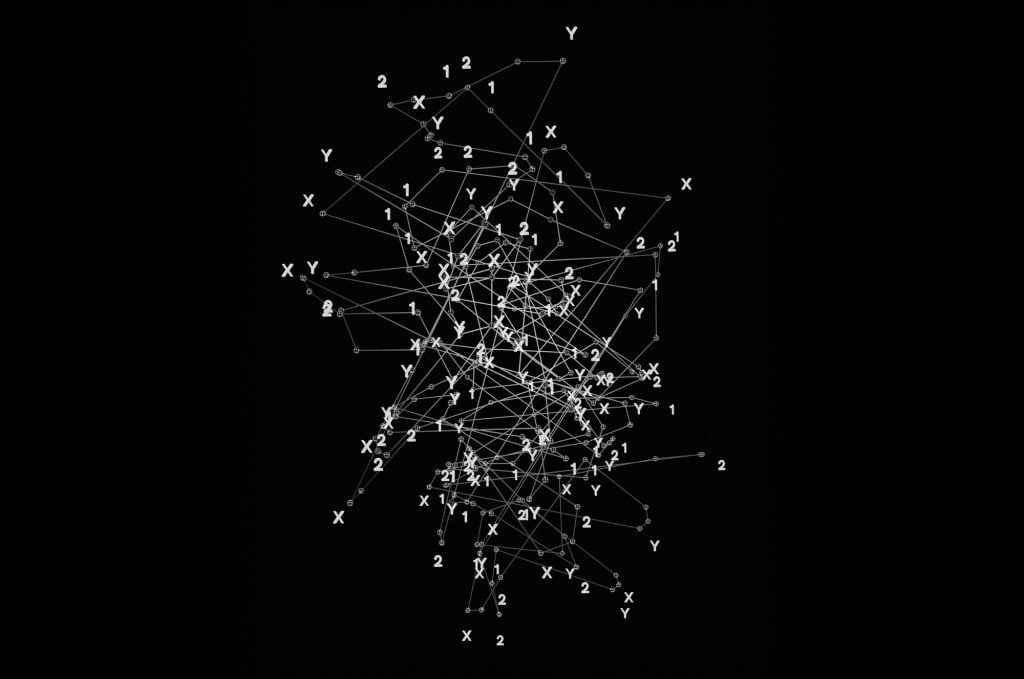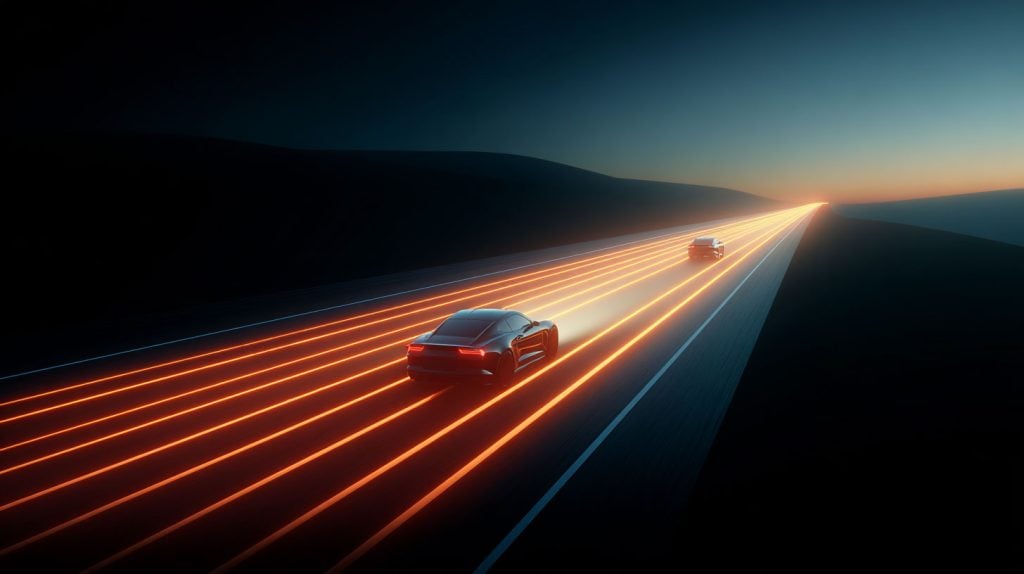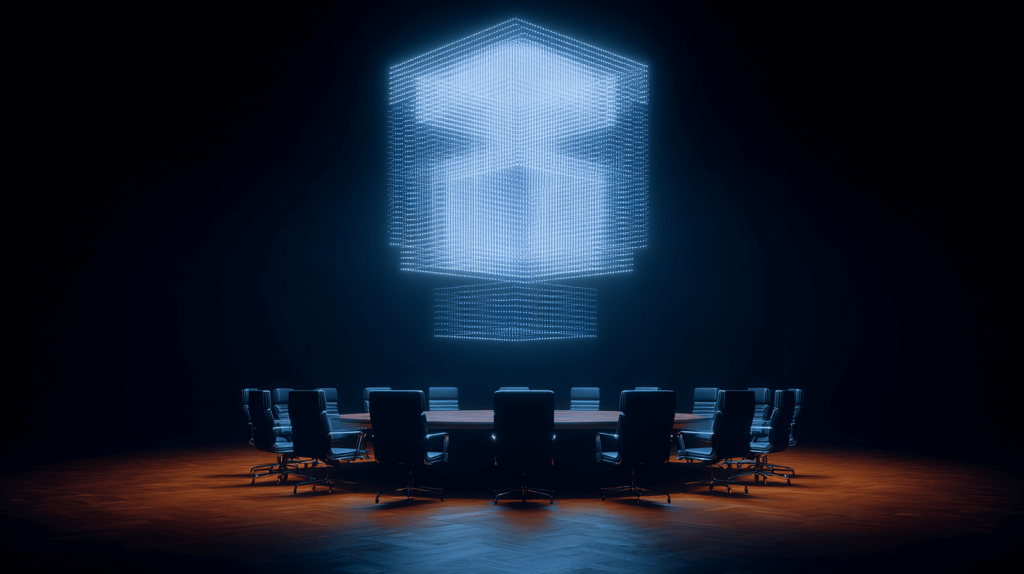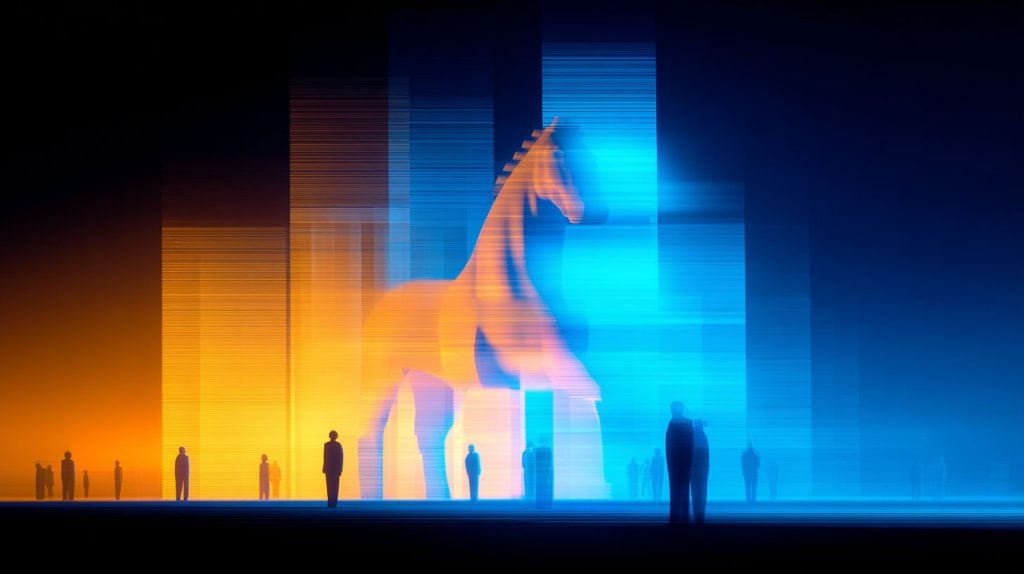Looking for the latest software patent examples? You’re in the right place.
The global software market continues to expand rapidly with the proliferation of cloud-based applications, enterprise platforms, and now generative AI systems. This heightened level of innovation has intensified competition across all sectors of the tech industry.
To stay ahead, leading technology companies are not just investing in product development—they’re actively protecting their innovations through intellectual property strategies, including software patents. Ensuring patent eligibility is now a critical component of many companies’ go-to-market and funding strategies.
In this article, we highlight examples of both issued and pending software patents from major industry players such as Microsoft, OpenAI, Google, and Meta (formerly Facebook), as well as innovative startups like Glean.
Many of these patents are in a “patent pending” status—a vital designation that provides provisional protection while the U.S. Patent and Trademark Office (USPTO) reviews the application. These examples demonstrate how innovative companies are leveraging the patent system to secure market share, build defensible IP portfolios, and attract investment, with a particular focus on the rapidly expanding field of artificial intelligence.
Introduction to Intellectual Property
Intellectual property (IP) encompasses the legal protections granted to the creators of original works, including inventions, processes, designs, and brand identifiers. For software developers, IP rights are essential for safeguarding the commercial value of their innovations and maintaining a competitive edge.
Among the most powerful forms of IP protection in the software space are software patents. These patents grant inventors the exclusive right to make, use, sell, or license their software-based inventions for a limited time, typically 20 years from the date of filing. To obtain a patent, applicants must demonstrate that their software innovation is novel, non-obvious, and directed to patent-eligible subject matter under U.S. law.
The United States Patent and Trademark Office (USPTO) is the federal agency responsible for examining and issuing patents. A strategically prepared and properly prosecuted patent application can provide enforceable rights that prevent competitors from copying or exploiting your core technology without authorization. In today’s fast-paced tech ecosystem, securing patent protection for your software can be the key to attracting investment, increasing valuation, and deterring infringement.
Benefits of Patent Protection
Patent protection provides software developers with powerful legal tools to secure their innovations and preserve their market advantage. By obtaining a patent, developers gain the exclusive right to prevent others from making, using, selling, or importing their patented software invention without authorization. This exclusivity not only helps recoup investments in research and development but also opens the door to monetization opportunities through licensing and strategic partnerships.
Patents also serve as critical business assets, enhancing a company’s valuation and appeal to investors or potential acquirers. In a crowded and fast-moving tech market, a robust patent portfolio can serve as both a deterrent to infringement and a differentiator in the eyes of venture capital firms and acquirers.
Notable examples underscore this value—Amazon’s patent on its one-click ordering system helped it gain a lasting competitive advantage in e-commerce. Similarly, software patents in areas like AI algorithms, blockchain infrastructure, and logistics automation have become integral to the IP strategies of top tech firms. By securing patent protection, developers not only defend their innovations but also lay a foundation for future growth and leadership in their domain.
Types of Patents
There are several types of patents that can be granted for software-related inventions:
Utility Patents: A utility patent is the most common type of patent and covers the functional aspects of a software invention. They protect the way a software program works and how it achieves its results.
Design Patents: These patents cover the ornamental design of a software user interface, focusing on the visual aspects rather than the functionality.
Provisional Patents: Provisional patents provide temporary protection for a software invention, allowing developers to file for a utility patent within one year.
The USPTO is responsible for reviewing and granting these types of patents, ensuring that software inventions receive the appropriate level of protection.
The Role of the Patent Office
The USPTO plays a central role in the software patenting process. As the federal agency responsible for granting patents, the USPTO examines each application to determine whether the claimed invention satisfies the statutory requirements of novelty, non-obviousness, and subject matter eligibility. This process includes conducting detailed prior art searches and applying legal standards established by case law and the U.S. Patent Act.
Beyond examination, the USPTO also serves as a critical resource for patent attorneys and software developers. The agency publishes examination guidelines, policy updates, and technical resources that help applicants understand how to draft patent claims and disclosures that meet current legal standards—particularly important in the rapidly evolving area of software and AI-related inventions.
By understanding the USPTO’s role and leveraging its published guidance, software developers and their counsel can better navigate the complexities of the application process, avoid common pitfalls, and improve their likelihood of securing enforceable patent protection for their innovations.
Recent Software Patent Examples (2024–2025)
Below are 9 examples of notable software and AI patents from mid-2024 through early 2025. These include filings or grants by big tech companies and emerging startups, with an emphasis on generative AI innovations as well as other digital AI advancements:
- Glean (Startup) – Generative AI for Enterprise Search
Patent Application Number: US20240256582A1
Published: Aug 1, 2024
Glean Technologies filed a patent on using generative AI to improve search results. The system leverages a GPT-style model to create a natural-language summary of search results, providing a concise answer or summary rather than just a list of links, thus enhancing the efficiency of the search experience. - Microsoft – Generative AI for Game Narratives
Patent Number: WO2025006277
Published: Jan 2025
Microsoft’s patent explores using generative AI to help craft and alter video game narratives. It outlines an AI “co-pilot” for game designers and players, allowing natural-language prompts to generate or modify in-game content such as new rules, characters, and storylines in real-time. For instance, a player in a sandbox game like Minecraft could ask the AI to create a new NPC or gameplay rule instantly. - Shopify – Similarity-Based Generative AI Output Filtering
Patent Application Number: US20240160902A1
Published: May 16, 2024
Shopify filed a patent for a system that employs a similarity-assessment layer at the output of a generative AI model. This system evaluates the similarity of generated content against existing items in a repository. If the similarity exceeds a predefined threshold, adjustments are made to either the input or the AI model itself, prompting the AI to generate new, unique output. This innovation ensures the originality of AI-generated content and addresses potential issues of content duplication. - OpenAI – Language Model for Text Generation & Editing
Patent Number: US11983488B1
Granted: May 14, 2024
OpenAI’s patent covers a system for automatically generating and editing text with a large language model (LLM). The method involves receiving an input text prompt and user instructions, generating an output using an LLM, and allowing further user instructions to edit the output, optimizing the model through iterative training cycles based on feedback. - IBM – Privacy-Preserving Prompt Processing for LLMs
Patent Application Number: US20250086310A1
Filed: March 2025
IBM’s patent involves a system to protect users’ personal data when using AI assistants. It scans user prompts for sensitive information, replacing it with anonymous placeholders before processing, thereby improving user trust and data compliance. - Google – Text-to-Image Generation via Masked Generative Transformers
Patent Number: WO2024130137A1
Published: June 20, 2024
Google patented a method for generative image synthesis using masked generative transformer models to construct high-resolution images from tokens, addressing resolution limitations of training data. - Meta (Facebook) – Neural View Synthesis for AR/VR
Patent Application Number: US20240303910A1
Published: Sep 2024
Meta Platforms patented a technique for converting 2D images into immersive 3D scenes for augmented reality using neural view synthesis, enhancing virtual and augmented reality experiences. - Tesla – Machine Learning for Autonomous Vehicles
Patent Application Number: US20240029482A1
Published: 2024
Tesla’s pending patent application describes a system employing machine learning to process image data from vehicle sensors, facilitating the identification of object distances from the vehicle. This innovation is pivotal for autonomous driving, enhancing safety and efficiency by improving the vehicle’s ability to navigate complex environments. The system also features a user interface for analyzing model performance, making it an integral part of Tesla’s Full Self-Driving (FSD) technology. Discover more about Tesla’s patents at Justia Patents. - PayPal – Generative “Knowledge Bot” as a Service
Patent Number: WO2025034464A1
Published: Feb 13, 2025
PayPal’s system dynamically creates chatbots to answer domain-specific questions by pulling from relevant data, providing tailored GPT-powered customer service or knowledge management solutions.
Trends in AI Patent Filings and Generative AI Growth
Beyond protecting individual software inventions, recent data highlights explosive growth in artificial intelligence (AI) patent activity, with a notable surge in generative AI (GenAI) technologies. As AI continues to transform industries from healthcare to finance, companies are racing to secure IP rights over foundational algorithms, training methods, and use-case implementations.
Key trends in AI and GenAI patent filings include:
Generative AI Patent Boom
The growth in generative AI patent activity over the past decade has been nothing short of extraordinary. In 2014, there were fewer than 1,000 GenAI-related patent families. By 2023, that number had surged to over 14,000—an increase of more than 800%—driven largely by breakthroughs in deep learning and transformer-based architectures since 2017. Remarkably, over 25% of all generative AI patent families published to date were filed in 2023 alone.
This surge in patent activity mirrors an explosion in academic output. In 2023, generative AI research accounted for 45% of all scholarly publications ever produced in the field, highlighting the unprecedented pace of development and commercialization. The public release of advanced models like ChatGPT has catalyzed a global race to innovate, dominate, and secure IP rights over foundational AI technologies.
Across the broader AI landscape, more than 80,000 AI-related patents have been filed globally over the past five years. Leading tech companies now average approximately 15 new AI patent filings per day, underscoring the scale and intensity of competition. For software developers and AI startups alike, this trend signals both opportunity and urgency: to stake a claim in emerging AI markets, securing strong patent protection is no longer optional—it’s strategic.
Leading AI Patent Filers (China Takes the Lead)
Chinese organizations dominate the generative AI patent landscape. By 2023, China had filed over 38,000 GenAI patents (2014–2023), which is six times more than the United States, the second-ranking country. The top four entities with the most generative AI patents are all Chinese: Tencent, Ping An, Baidu, and the Chinese Academy of Sciences, surpassing Western tech giants. Tencent alone holds thousands of GenAI-related patents, covering areas from GAN-based media to LLM applications.
Among U.S. companies, IBM (ranked 5th globally), Alphabet/Google (8th), and Microsoft (10th) have the highest number of GenAI patents. IBM, in particular, has heavily invested in AI intellectual property, with its watsonx platform contributing to its ownership of over 600 GenAI patents as of early 2024. Additionally, several Chinese tech firms like Alibaba and ByteDance feature in the global top 10, underscoring China’s prolific output in AI patents. OpenAI, while growing, only started filing patents in 2023 and has yet to join the ranks of the top filers.
AI Patent Composition
While generative AI represents one of the most dynamic areas in artificial intelligence, it still accounts for a relatively small—yet rapidly growing—portion of total AI patent filings. As of 2023, GenAI-related applications made up approximately 6% of all AI patent publications worldwide, up from about 4% in 2017. The majority of AI patents continue to focus on areas such as traditional machine learning, computer vision, predictive analytics, and speech recognition.
Within the generative AI category, text-based models—particularly large language models (LLMs)—dominate recent filings, fueled by the explosive growth of conversational AI platforms. However, the field is quickly diversifying. Patent activity is accelerating in areas such as:
- Generative Image Models – including diffusion models for synthetic media and AI-assisted design.
- Multimodal Systems – combining text, image, audio, and video generation into unified frameworks.
- Generative Audio – covering music synthesis, speech cloning, and soundscapes for immersive environments.
- Protein and Molecule Generation – where GenAI is being applied to drug discovery and biotechnology.
Another significant trend is the rise of AI patent filings by startups. Since 2018, startup-originated AI filings have reportedly grown by over 500%, signaling a strong push by emerging companies to build defensible IP portfolios early in their lifecycle. That said, major technology firms still dominate the patent landscape, holding approximately 65% of all AI-related patents worldwide.
For software developers and startup founders, this landscape presents both competition and opportunity. Filing early and strategically is critical not just for protection, but for valuation, credibility, and partnership potential in today’s IP-driven innovation economy.
Can Code Be Patented?
A common question from individual developers and startup SaaS founders is whether their software application—or its underlying code—can be patented. The short answer is yes, software-related inventions are eligible for patent protection under U.S. law, but with important caveats.
While software code itself is not patentable, the functionality and technical processes that the software performs can be. The focus of a software patent is not on the specific lines of code, but on how the software interacts with hardware or other systems to achieve a novel and non-obvious technical solution. In other words, it’s about protecting what the software does and how it achieves those results, not the literal code that performs the task.
To qualify for patent protection, a software invention must go beyond an abstract idea. It must solve a specific technical problem or improve computer functionality in a demonstrable way. Overcoming rejections under 35 U.S.C. §101 (subject matter eligibility) often requires carefully framing the invention to show how it provides concrete technological improvements over existing solutions.
A well-prepared software patent application should describe:
- The technical architecture of the system (e.g., client-server model, data flow, components).
- How the system performs its functions from both the user’s and the machine’s perspective.
- The specific steps the computer takes to achieve the intended outcomes.
- Enough detail to allow a person skilled in the art—typically a software engineer—to implement the invention.
While copyright may protect the literal expression of code, patent protection is broader and can secure the core functionality behind an app, platform, or algorithm. For startups, this distinction is crucial: a single well-drafted software patent can form the foundation of an enforceable IP strategy, a barrier to entry for competitors, and a magnet for investor interest.
In this article, we debunk more of the most common patent myths.
Software Patent vs. Copyright
When it comes to protecting software, there are two key types of IP protection relevant to software: copyright and patents. Copyright primarily covers the expression of the software code, offering protection for the “exact” source code. However, this form of protection can be somewhat limited, as competitors might bypass copyright safeguards by making minor modifications to the code. On the other hand, utility patents provide a more robust form of protection by safeguarding the underlying ideas, algorithms, and processes that drive the software’s functionality.
Patents go beyond the mere expression of code to protect the novel features, processes, and design of a system that powers an “app.” They focus on the inventive concepts, system architecture, and the computations and data manipulation executed by a computer.
This comprehensive approach ensures that the core innovations remain protected, offering a more strategic advantage in securing intellectual property rights. Patents offer broader protection by preventing others from creating a program that performs the same function, regardless of how it is coded.
Software Patent Application Process
Obtaining a patent is not easy, so the process should begin with a discussion with an experienced patent attorney. Filing a non provisional patent application is a critical step in securing patent protection, requiring detailed descriptions and claims to meet legal standards.
Next, a prior art search is highly recommended for two reasons: (i) the search could identify prior art references that disclose or suggest the invention (and preclude you from getting a patent); and (ii) the search will uncover the state of the art and assist in the drafting process. Once it has been determined that the invention is eligible for a patent and includes features not disclosed or suggested by the prior art, then the application can be drafted.
The drafting process is a collaboration between the attorney or agent (who has knowledge of the legal requirements) and the client (who has knowledge of the technology). After the application is drafted and filed with the Patent Office, a patent examiner having specific expertise in the technology area will examine the application and issue a letter identifying which claims are patentable and/or which claims are not patentable. The applicant, through their attorney, can then file a response correcting any deficiencies and requesting allowance of the application.
Software Patent Cost
The costs associated with obtaining a patent can vary greatly depending on the complexity of the invention and the lawyer or law firm drafting the application, as well as the lawyer or law firm handling the prosecution of the application before the Patent Office. Filing a provisional patent application can be a cost-effective strategy, allowing inventors to secure a filing date while delaying the expense of a non-provisional application. Unlike standard law firms operating with a black-box billable hour model, the Rapacke Law Group offers most services at a transparent and cost-effective fixed fee.
Experienced Software Patent Lawyers
The attorneys at the Rapacke Law Group have decades of intellectual property experience between them. Our experience has taught us to focus on the quality of the work product and the client’s service experience. Please take a look at our reviews to see what our clients think of our flat-fee pricing model and our service-oriented approach. If you have any questions or would like a free phone consultation, please do not hesitate to contact us.
Challenges in Patenting
Patenting software can be a complex and challenging process. One of the main hurdles is determining whether a software invention is eligible for patent protection. The patent office has specific guidelines for assessing patent eligibility, and not all software inventions meet these criteria. For instance, the Supreme Court’s decision in Alice Corp. v. CLS Bank International has significantly impacted the patentability of software-related inventions, making it more difficult to secure patents for abstract ideas without a clear technical improvement.
Another major challenge is the need to conduct a thorough prior art search. This step is crucial to ensure that the software invention is novel and non-obvious. A comprehensive prior art search requires significant time, resources, and expertise in the relevant technical field. It involves examining existing technology and prior art references to identify any similar inventions that could preclude, or “anticipate,” the software product.
The patent application process itself is also intricate and demanding. It requires the preparation of detailed technical documents and claims that accurately describe the software invention. These documents must clearly explain how the software operates and the specific technical problem it solves. Additionally, the patent examiner may raise objections or rejections during the examination process, which can further prolong the patenting process and require additional resources to address.
Overall, the challenges in patenting software highlight the importance of understanding the patent system, conducting thorough prior art searches, and preparing detailed and accurate patent applications. By navigating these challenges effectively, software developers can increase their chances of securing patent protection for their innovative solutions.
Patent Protection Strategies
To navigate the unique challenges of patenting software, developers and SaaS companies must adopt strategic, proactive approaches to intellectual property protection. A well-executed patent strategy not only safeguards valuable innovations but also strengthens competitive positioning in a fast-paced marketplace.
1. Focus on Utility Patents
Utility patents are essential for protecting the functional aspects of software. These patents can cover innovations such as algorithms, data processing methods, system architectures, and software-enabled workflows. To meet USPTO requirements, the invention must be novel, non-obvious, and demonstrate a technical improvement over existing solutions. Strong utility patents offer broad and enforceable rights, allowing companies to prevent others from replicating core functionality.
2. Leverage the First-to-File System
Under the U.S. “first-to-file” patent system—established by the America Invents Act (AIA)—the right to a patent is granted to the first party to file a patent application, not the first to invent. This makes early filing a critical component of any software patent strategy. Waiting too long can result in losing rights to a competitor who files first, even if your team developed the innovation earlier.
This system reinforces the value of provisional patent applications, which allow inventors to quickly establish a priority date at a lower cost. A provisional application holds your place in line for up to 12 months, giving your team time to refine the invention, build out supporting documentation, and prepare a formal non-provisional application—all while preserving your filing date under the first-to-file regime.
3. Use Provisional Applications Strategically
Filing a provisional application is a cost-effective way to secure early protection, particularly during the early stages of software development. It allows inventors to move quickly in response to innovation without needing a full, finalized specification. This approach is especially useful for agile development teams and startups where features and architecture may evolve rapidly. Critically, the priority date secured by a provisional application can help block others from patenting similar concepts filed later.
4. Build and Manage a Patent Portfolio
A well-curated patent portfolio can serve as both a shield and a sword. Developers should consider protecting different aspects of their software through multiple filings—utility patents for functionality, design patents for user interfaces and visual layouts, and continuation applications to expand claim coverage as the product evolves. A strong portfolio not only deters competitors but can also be leveraged in negotiations, licensing deals, and acquisition discussions.
5. Partner with Experienced Software Patent Attorneys
Working with patent counsel who specialize in software and AI-related inventions is vital. Experienced patent attorneys can help identify patentable subject matter, conduct prior art searches, draft technically sound and legally defensible applications, and guide the application through USPTO examination. A knowledgeable attorney will also help ensure your applications are aligned with evolving case law, including subject matter eligibility under §101 and obviousness standards under §103.
Speak With an Experienced Intellectual Property Attorney
At RLG, our attorneys have the experience and insight to guide you through every stage of the intellectual property process—whether you’re protecting a novel invention, securing your brand, or safeguarding original works of authorship. Schedule a Free IP Protection Strategy Call to learn how we can help you protect our valuable intellectual property.
The RLG Guarantee
In addition to a fixed-fee billing approach, RLG offers a money-back guarantee on all prior art searches, provisional patent applications, design patent applications, and trademark applications. To be clear: should our team determine that your invention is not patentable in light of the prior art, a full refund will be provided. If patentable, we will credit the cost of your search towards your new application.
For the trademark and design patent applications, this means that if your application does not receive a notice of allowance for any reason, we will provide a full refund. Our trademark and design patent application packages include all search, preparation, office action, USPTO correspondence, and USPTO filing fees. Please call us at (954) 335-0567 for a free consultation or take our intelligent IP quiz to see what protection is best for your invention.




